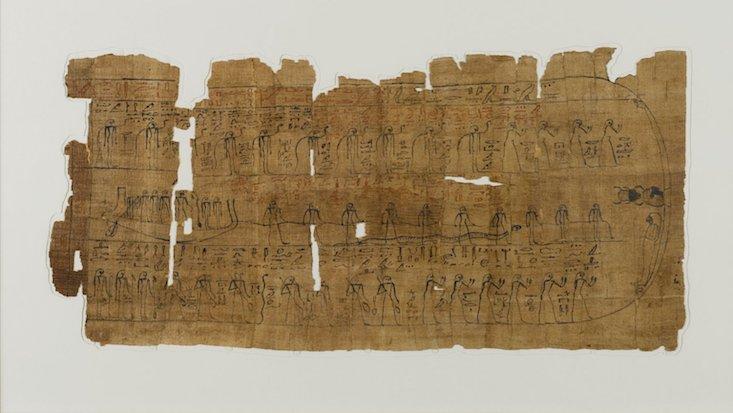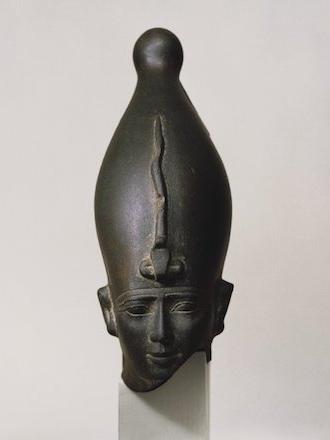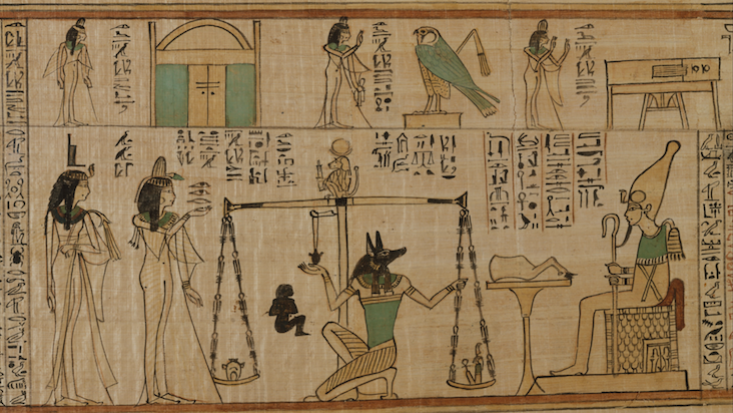Book of the Dead: A Guidebook to the Afterlife
The Book of the Dead prevails in both popular culture and current scholarship as one of the most famous aspects of ancient Egyptian culture. This funerary text provides some of the most vivid and enduring images from the ancient world – there are few who have not heard some version of the Book of the Dead’s afterlife mythology. Familiar scenes – like a scale weighing a heart of the deceased against a feather or the eternal destruction of a soul by a deity composed of animal parts – originate from the Book of the Dead. With such impressive narratives, it is clear why Egyptian beliefs about the afterlife are so thoroughly ingrained in our collective memory. But despite the Book of the Dead’s lasting fame, it is often misunderstood or purposefully romanticized for the sake of an exhilarating story, as in the cultural phenomenon of The Mummy in 1999. So what is the Book of the Dead, how was it significant to Egyptians in the past and how do Egyptologists use this important resource today?
“The Chapters/Book of Going Forth By Day” is the official translation of the title given to a collection of papyrus rolls on the same subject known commonly as the Book of the Dead. Though the word “book” brings to mind a story or text written by a singular author and reprinted repeatedly in the same form, these texts have multiple authors and each version has its own variations. These texts served as a guide for the dead to use on their journeys to the afterlife. Each was prepared by scribes for burials, with varying quality depending on the scribe’s skill, and some were prepared with blank spaces to later fill in the name of the dead. In addition to the long-form papyrus versions of the Book of the Dead, spells and passages from the text were recorded other places – on tomb walls, mummy wrappings and even inside King Tut’s golden mask.
The Book of the Dead first appeared in the New Kingdom, but the text evolved from a long tradition of magical funerary writing. The oldest of these writings, the Pyramid Texts, were available exclusively to Egyptian royalty. As religious beliefs on the afterlife changed, copies of the Coffin Texts – an adapted version of the Pyramid Texts – were written on coffins and included in the tombs of non-royals, such as wealthy Egyptians and elites. By the New Kingdom, the afterlife was understood as accessible to all who could afford their own Book of the Dead, a handy guidebook providing the spells necessary for the perilous, confusing and elaborate trials faced to earn eternal life among the gods.
The gods Osiris, associated with resurrection, and Re, associated with the sun, star in the Book of the Dead. Forty-two additional gods appear to judge and test the newly departed. Although the text itself varies in content and order, the narrative is generally divided into four main sections: the deceased enters the underworld and regains the physical abilities of the living, the deceased is resurrected and joins Re to rise as the sun each day, the deceased travels across the sky before judgement in the underworld by a panel of gods and, finally – assuming the soul hasn’t been destroyed – the deceased joins the gods. To progress through the complex challenges in these stages, the dead must speak the right names and spells at the right time and respond with the right answers to the gods’ questions. In one interesting and curious case, the deceased must name various parts of a sentient doorway before passing. Luckily, the Book of the Dead conveniently holds all the required information.
These texts were certainly important to ancient Egyptians, and now they constitute one of the most important resources for Egyptologists hoping to understand the Egyptian religion and afterlife. In addition to explicitly describing the afterlife and the roles of the gods, the Book of the Dead also gives insight into important concepts like the ka and ba, aspects of the soul believed to live on after death. The ka needed a physical form to return to in order to exist, and so the Book of the Dead helps us to understand the importance of the well-known Egyptian practice of mummification. Similarly, the Book of the Dead also contains spells for preserving specific parts of the body and the spell for the Opening of the Mouth ceremony, a ritual performed before the mummy was sealed in its tomb, often depicted in tomb decoration. The Book of the Dead reveals central aspects of the ancient Egyptians’ belief system, and, like many topics in Egyptology, our theories are constantly changing, growing and adapting with every new translation of this text.


